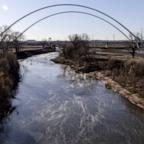Facebook to Require New Timeline Profile
All Facebook users will be forced to use "Timeline" in the next couple of weeks.
Jan. 25, 2012 — -- Whether they like or not, all Facebook users will be forced to use the new profile called "Timeline" in the next couple of weeks.
The idea behind Timeline is a visually appealing story of someone's life. Facebook has a section on its website introducing the new update with the phrase, "Tell your life story with a new kind of profile."
The idea was originally introduced in September 2011 and made available to developers. More than a million people signed up as of early December 2011 for beta access and gave feedback on the new profile. On Dec. 15, 2011, it was announced Timeline was available to everyone.
According to a blog post Tuesday, "Last year we introduced timeline, a new kind of profile that lets you highlight the photos, posts and life events that help you tell your story. Over the next few weeks, everyone will get timeline."
Opting in gives a user a seven-day preview period to fix up the timeline before it is published. However, the timeline goes live automatically after the seven days if a user doesn't choose to make it live before the preview period is over.
A cover photo, which is a big photo across the top of a user's profile, may be the first noticeable change with a switchover to Timeline.
As the user scroll down he sees all the main posts and life events that happened during the year being scrolled through. These include photos, friend connections, places visited, pages liked and more.
Users can add important life events to their timeline and also have the option to hide posts, giving control over what to highlight during a certain time period.
If someone wants to see certain activity that happened on a certain day, he can click on "activity log" under his cover photo. That shows all activity that can be sorted by year but cannot be searched by date. As of now, a user has to scroll to the certain date he wants to look at.
There has been backlash for every Facebook profile change, and Timeline will not be an exception. Brian Carter, an Internet marketing and social media expert, does not think people will delete their profiles.
"It's the typical freak out every time it changes," Carter said. "One of the complaints I've heard [is that] people think it looks like MySpace. I think it looks classy. The cover photo is an opportunity to show people more about your life. People didn't really leave MySpace until there was a better option, everybody is on it [Facebook] and it's only growing.
"The other thing about the Timeline: How often do you go to your friend's pages?" he said. "Most of the time they're on newsfeed or a group. It's gonna be cool but we don't spend a heck of a lot of time on other people's pages."
Additionally, Facebook is making new apps available to users to incorporate into their Timelines. This goes along with the new Open Graph platform, which was introduced in September. According to Facebook, this platform is how Facebook introduces new features such as photos and places.
Now, Open Graph has been opened to third party apps, including 60 new apps announced last week, such as Pinterest, a virtual pinboard website. Carter thinks the success of these apps will depend on what people create.
Facebook is a networking site that constantly grows and changes.
In a 2008 interview with The New York Times, Facebook founder Mark Zuckerberg discussed previous profile changes. Before the first big change in September 2006, users had to search the pages of their friends for information. But then Zuckerberg introduced "News Feed," now an accepted feature. At the time, there was a backlash. People's information on their profiles was now on everyone's home pages -- everything from break-ups to the embarrassing pictures from the party the night before.
A group was formed against the News Feed and by the end of the first day, the group had 284,000 members. In response, Zuckerberg decided to add a privacy feature to the News Feed though he kept the News Feed active because he thought people would get used to it. He started to get positive feedback after the initial shock.
Soon after the News Feed was introduced, Facebook was opened to the public rather than just students and the amount of users grew to millions.




